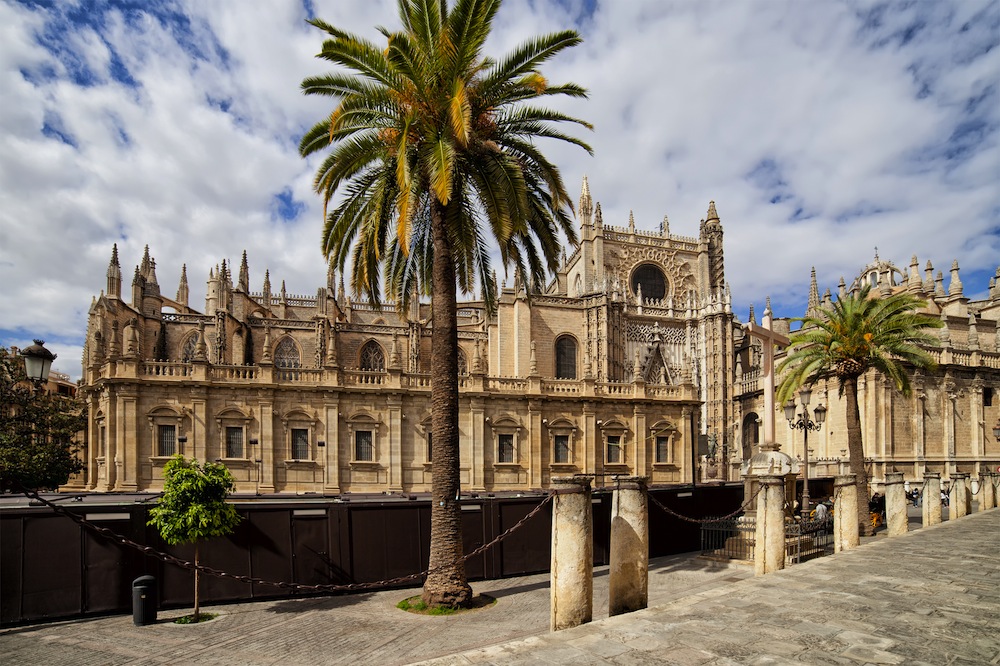
Seville is one of the most spectacular cities in Spain for architecture, a City that possesses an unparalleled wealth of history and art. Together the Cathedral, Alcázar (Arabian fort) and Archivo de Indias (The New World Trade Archive) form a remarkable monumental complex in the heart of Seville. They perfectly epitomize the Spanish "Golden Age", incorporating vestiges of Islamic culture, centuries of ecclesiastical power, royal sovereignty and the trading power that Spain acquired through its colonies in the New World.
Founded in 1403 on the site of a former mosque, the Cathedral, built in Gothic and Renaissance style, covers seven centuries of history. With its five naves it is the largest Gothic building in Europe. Its bell tower, the ‘Giralda’, was the former minaret of the mosque, a masterpiece of Almohad architecture and now is an important example of the cultural syncretism thanks to the top section of the tower, designed in the Renaissance period by Hernán Ruiz. Its "chapter house" is the first known example of the use of the elliptical floor plan in the western world. Ever since its creation, the Cathedral has continued to be used for religious purposes.
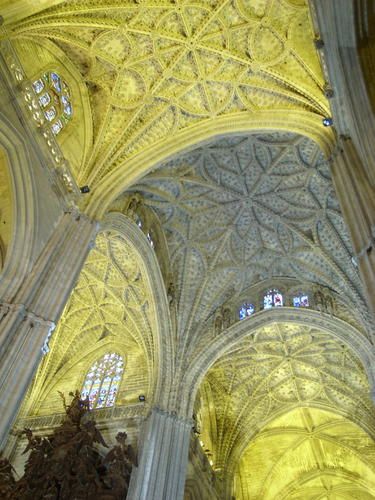
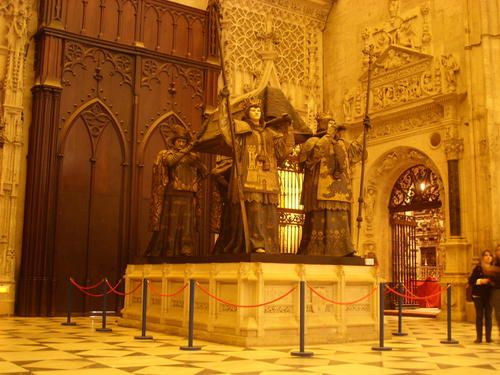
The original nucleus of the Alcázar was constructed in the 10th century as the palace of the Moslem governor, and is used even today as the Spanish royal family's residence in this city, thereby retaining the same purpose for which it was originally intended: as a residence of monarchs and heads of state. Built and rebuilt from the early Middle Ages right up to our times, it consists of a group of palatial buildings and extensive gardens. The Alcázar embraces a rare compendium of cultures where areas of the original Almohad palace - such as the "Patio del Yeso" or the "Jardines del Crucero" - coexist with the Palacio de Pedro I representing Spanish Mudejar art, together with other constructions displaying every cultural style from the Renaissance to the Neoclassical.
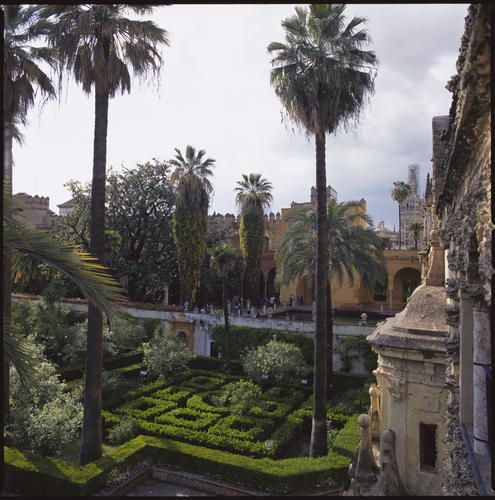
The Archivo de Indias building was constructed in 1585 to house the Casa Lonja or Consulado de Mercaderes de Sevilla (Consulate of the merchants of Seville). It became the Archivo General de Indias in 1785, and since then it has become home to the greatest collection of documentation concerning the discovery of and relations with the New World. The Archivo de Indias, designed by the architect responsible for completing El Escorial, Juan de Herrera, is one of the clearest examples of Spanish Renaissance architecture. An enormous influence on Baroque Andalusian architecture and on Spanish neoclassicism, it symbolizes the link between the Old and the New World.
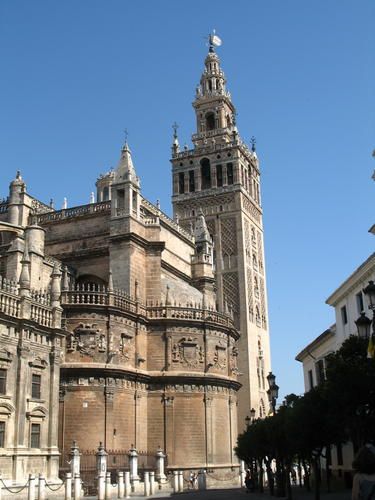
Seville owes its importance during the 16th and 17th centuries to its designation as the capital of the Carrera de Indias (the Indies route: the Spanish trading monopoly with Latin America). It was the "Gateway to the Indies" and the only trading port with the Indies from 1503 until 1718.
The Conjunto Monumental, or group of historic buildings encompassing the Cathedral/Giralda, the Alcázar and the Archivo de Indias, constitutes a remarkable testimony to the major stages of the city's urban history (Islamic, Christian, and that of Seville with its associations with the New World), as well as symbolizing a city that became the trading capital with the Indies for two centuries - a time during which Seville was the hub of the Spanish monarchy and played a major role in the colonization of Latin America following its discovery by Columbus.
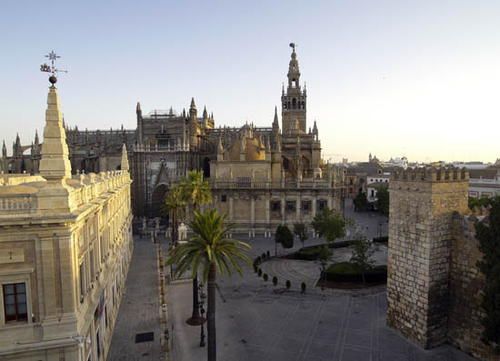
Each one of these monuments is associated with the colonization process. The tomb of Columbus is preserved in the Cathedral. The Sala de los Almirantes (Admirals' hall) in the Alcázar was the headquarters of the Casa de Contratación (House of Trade), from which the monopoly with the Indies operated, and where, as a seat of learning, it spawned some of the most important expeditions of exploration and discovery of that period. And the Archivo de Indias has, since the 18th century, housed the most valuable and important documents, which provide an insight into this historical event.
Ver mapa más grande
BEST TIME TO VISIT : ALL YEAR ... except maybe for August - too hot for most!